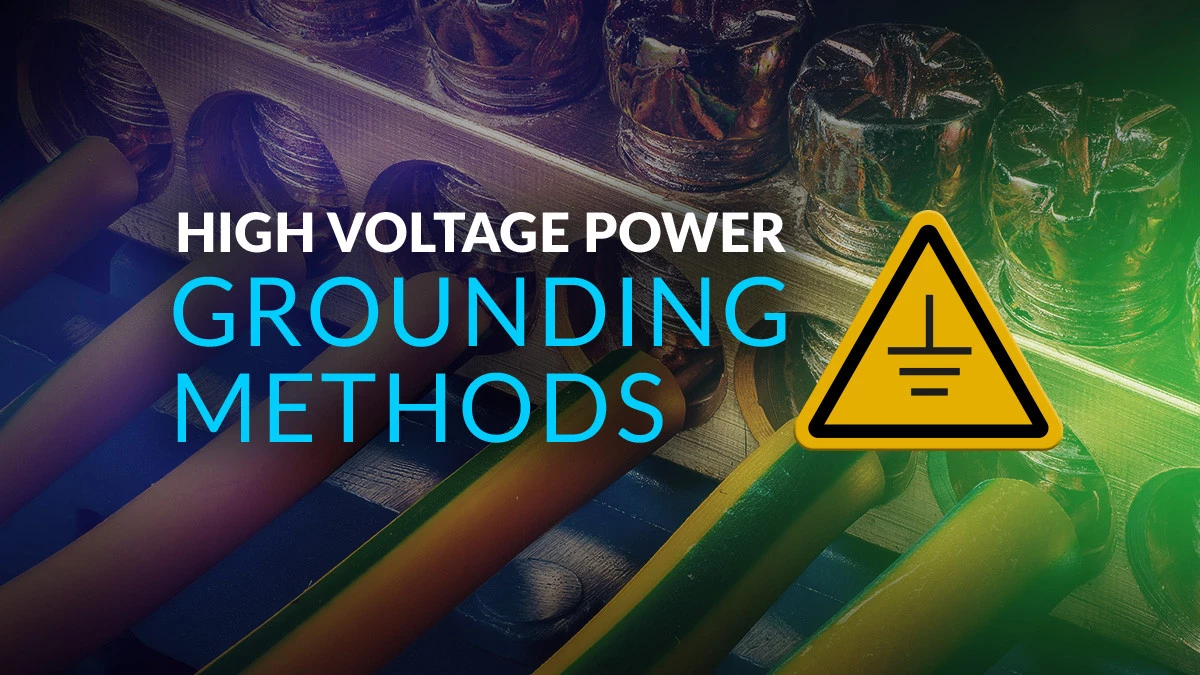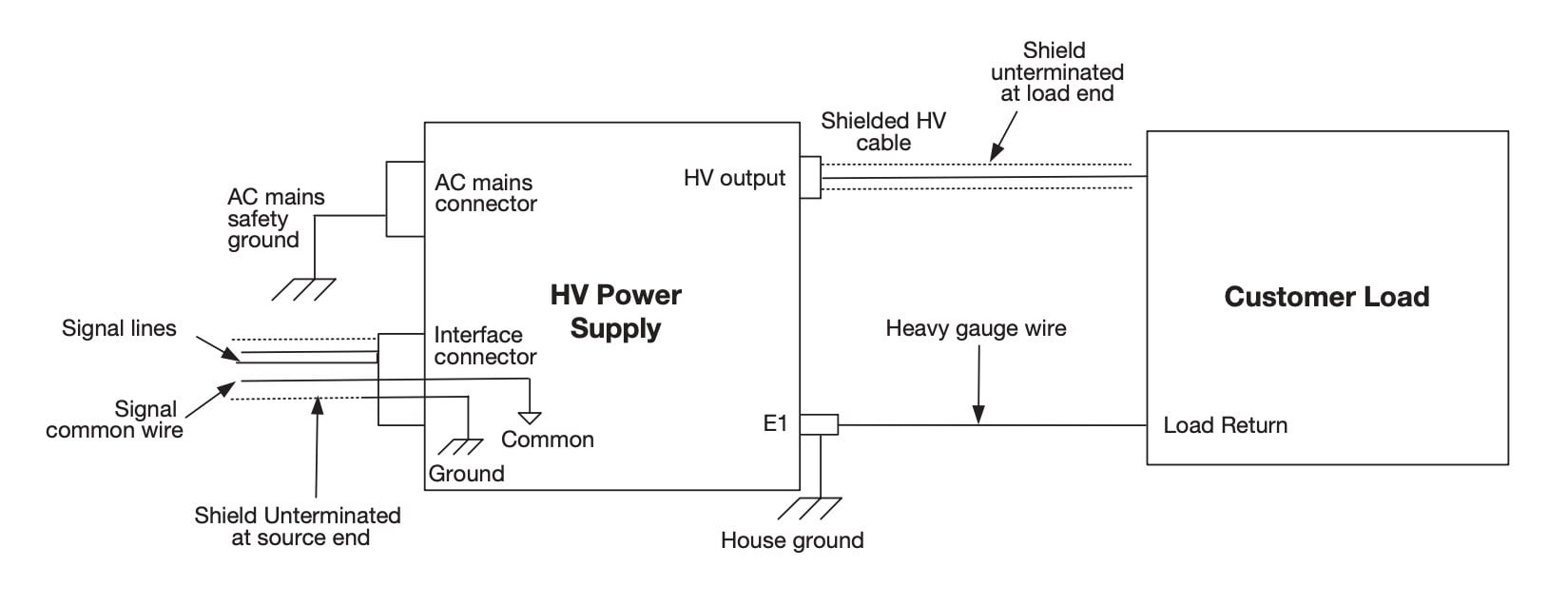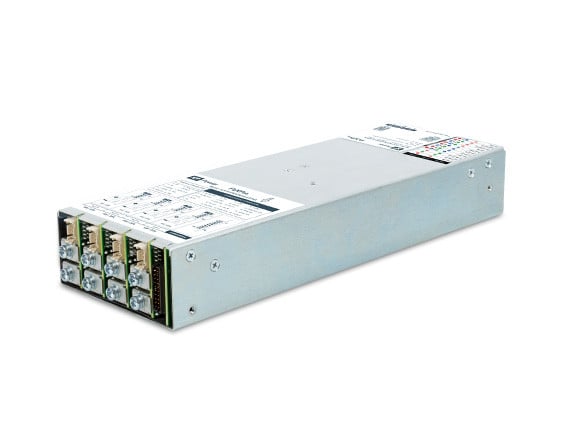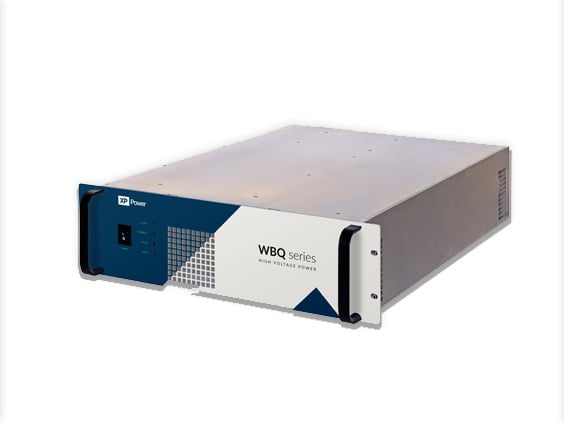
This blog explores the importance of proper grounding methods for high voltage (HV) power supplies and the steps to ensure stable and reliable operation in a customer’s system. This is especially critical for HV power supplies due to the stored energy and potential for arc discharges in the system.
Overview:
The significance of grounding in HV power supplies.
Key grounding paths: AC mains, control signals, and HV load return.
Practical grounding methods to prevent transient spikes and ensure system reliability.
Importance of safety ground in AC connectors and cords
All AC connectors and cords must contain a safety ground, typically an additional conductor in the line cabling (the same gauge as the AC feed wires). This is intended only as a safety ground, should the chassis of the power supply become disconnected from ground, and should never be used to connect signal or load returns. This is also always a part of the line connection system as required by all standard wiring codes and standards.
Proper grounding for external signal interfaces
For external signal interfaces like programming, monitoring, enabling, and interlock, the return paths should always be connected to the common terminal of the power supply, not directly to ground. Within the power supply, the common is tied to ground at a proper point, preventing transient voltages or radio frequency interference (RFI) on the signal lines. Many power supplies offer multiple common connections on the signal interface connectors for this purpose. If shielded or coaxial cables are used, it’s essential that the shield is not connected to the common return. Instead, the shield should be grounded only at the power supply end. A ground pin is provided on the interface connector for this specific task.
HV load return & high peak discharge currents
The HV load return is more than just a load return path; it also carries high peak discharge currents during arc discharges. During rapid discharge, the energy stored in the power supply is released through an internal limiting resistor. Since the resistor cannot be overly large without affecting performance, the resulting peak currents are high and of short duration (see Figure 1 below).

Figure 1
How to minimize voltage spikes
When peak currents flow through the load return wire, even small inductances can lead to significant voltage spikes. To minimize such spikes, you should take the following 4 steps:
1. Use a heavy-gauge wire or braid to connect the load return directly to the chassis ground stud (E1).
2. Check that the load return wire is as short as possible and never coiled.
3. Avoid connecting the load return to the house ground or any other return at the load end.
4. Ensure that a heavy-gauge wire connects the chassis ground stud (E1) directly to house ground. Relying on the AC mains ground alone for this connection is not sufficient.
Mounting both the power supply and the load on a common heavy ground plane is the most reliable grounding configuration, though it may not always be practical. House ground, which often includes building frames, electrical conduits, or water pipes, provides an alternative.
Grounding guidelines for HV power supplies
Figure 2 below shows the recommended grounding arrangement:

Figure 2
To prevent grounding issues and ensure reliable operation, you should be aware of the following:
Signal interface grounding
Shield signal interface wiring if possible, grounding the shield only at the power supply end.
Connect signal returns to the common return pins on the interface “D” connector, not to the chassis or house ground.
HV cable shielding
The shield of the HV cable should be cut off and covered at the load end, leaving it unterminated.
Recommended wire gauge
The load return wire gauge should be at least 6 AWG or heavier, depending on the type of load.
Isolation
Interface signal commons should be isolated from ground to prevent grounding issues.
Summary
Proper grounding is essential for the reliable operation of high voltage power supplies, especially considering the potential for transient spikes caused by arc discharges. However, you must ensure heavy wire connections, use of appropriate gauge wires, and isolation of interface signals to maintain your system’s stability. By following these grounding methods, you can prevent unwanted voltage spikes and ensure reliable operation in your system.
Download a wealth of technical information in this concise, easy reference resource - Your Essential Guide to Power Supplies.








